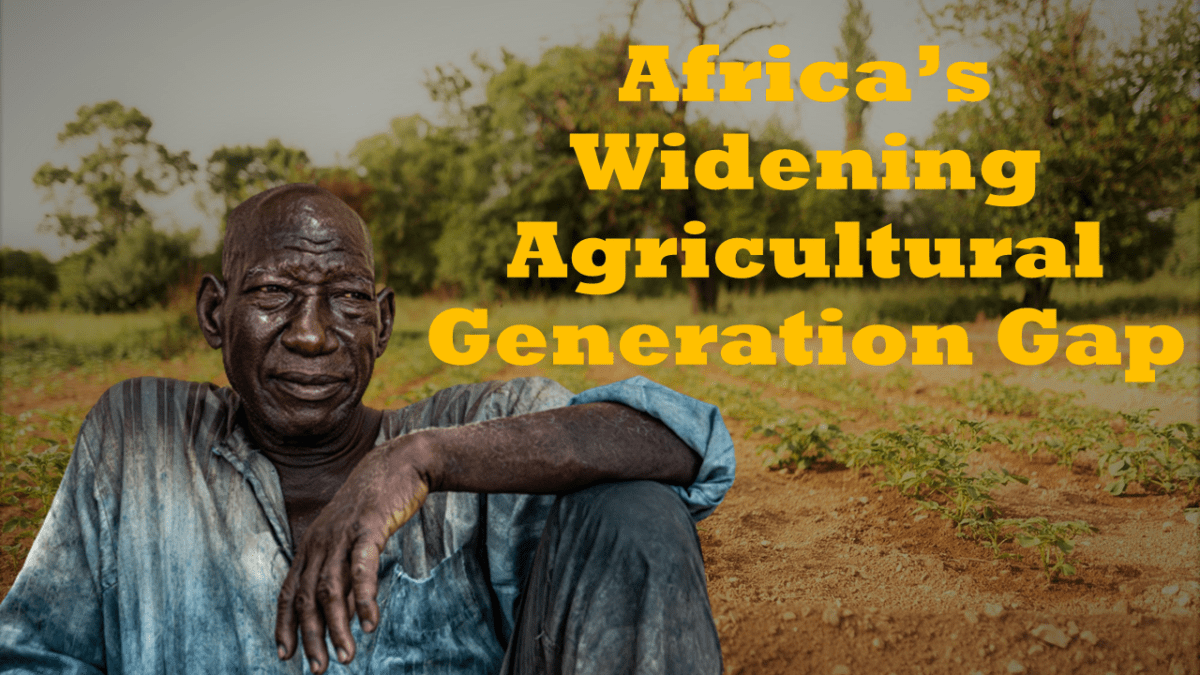Addressing the Agricultural Generation Gap for Africa’s Socioeconomic Development

The majority of people in sub-Saharan Africa reside in rural areas, which are also the areas with the lowest levels of human development. Growing agriculture has the dual benefits of reducing poverty in such areas and improving access to food and nutrition security because most rural households are agricultural in nature and the sector makes a significant contribution to the overall economy.
Given that agriculture is responsible for up to almost 70% of domestic employment and 75% of domestic trade on the continent, it makes sense to focus all support on the industry. Because agriculture was a vital sector for socioeconomic growth during Asia’s Green Revolution, widespread rural poverty in Africa offers a chance to do the same and build on that success.
The Bottlenecks
Despite the numerous opportunities for rural livelihood offered by agriculture, many young people, regrettably, find it unappealing and view it as the employment of last resort. This is due to two primary factors. First, many young people think agriculture is not glamorous, lucrative, or has “snub appeal.”
Second, due to a lack of appropriate facilities, institutions, and policies that support agriculture in rural areas, such as financial options and markets. As a result, rural-to-urban migration has increased, poverty has increased, and agriculture has remained undesirable and unattractive to youth. This scenario puts food security at risk and could collapse rural economies that rely mostly on agriculture. As a result, farmers are getting older on average and younger people are less likely to take over for older farmers, creating a “generation gap” in food production.
Because of their negative perception of agriculture, many young people prefer to move to cities and towns in search of white-collar jobs. This is the reason for the generation gap in agriculture. This makes a test for the mechanical headway of farming as more seasoned ages are less acquainted with new developments.
Prospects
Despite these challenges, there is a chance to make agriculture more appealing to the younger generation. Younger generations were born and raised in a technological era where they are surrounded by technologies like smartphones, software programs, and other devices that are used everywhere in the world. Africa presents an expansion opportunity because it has the most uncultivated land in the world. Through mechanization, market access resulting from regional integration, business opportunities, roads, and general rural development, agriculture can be made sustainable in light of a growing population, technological advancements like ICT, and the development of infrastructure.
Recommendation for the future
Making better use of agricultural technologies will make it easier for the next generation to manage agriculture. It will not only inspire the new generation to become involved in agriculture, but it will also assist them in becoming farmers. Furthermore, there is the need to change farming unrefined components into modern items and this will rely progressively upon the limit of African business visionaries to partake and contend in worldwide, provincial, and neighborhood esteem chains.
In order to accomplish this, it will be necessary to support agricultural start-ups with assistance from entrepreneurship development platforms. This will address the market and financial constraints that prevent young people from participating in the agriculture value chain. One methodology toward this path would incorporate business brooding administrations which will uphold youthful agribusiness business visionaries through the arrangement of direction in regions, for example, business arranging, giving research and development framework offices, model turn of events and testing, item approval, business advancement, and working with monetary help through obligation and value. This is in line with the United Nations’ statement that “Africa needs to embrace economic diversification, but also needs to focus on agribusiness to lift the continent out of poverty and put it on the path to prosperity.”
At the policy level, the role of youth in the agricultural development agenda on the continent needs to be emphasized once more. This will serve as the foundation for thinking about how to incorporate gender equality into the agricultural development processes on the continent to get policymakers to be more committed.
Despite organizations like Eagmark’s efforts to correct the imbalance, it is necessary to identify the key success factors and devise strategies for scaling them. Eagmark is actively pursuing means of aligning its implementation by consolidating and forging new programs on youth empowerment in light of the recent rollout of the Science Agenda for Africa Agriculture (S3A), which outlines the guiding principles to help Africa take charge of Science, Technology, and Innovation (STI) to transform its agriculture.



